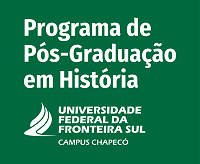Historical Representation and Experience
temporal (des)continuity and the possibility of true in historical narratives
DOI:
https://doi.org/10.36661/2238-9717.2023n41.13124Keywords:
Narrativism, Past representation, TemporalityAbstract
There are two tendencies to interpret the historical experience among contemporary historians: one considers the existence of the past, the other that it – the past - is already gone, accessible only by “traces.” In that sense, an ontological hierarchy between past and present arises, being the past an inferior instance of existence. The narrativist approach support this position, while phenomenologists and hermeneutics argue the other way round. Then, questions about the continuity and discontinuity between time and narrative emerges, putting at stake the possibility of a true representation of historical past. If the past is no more, how can we write a truthful History? Or would there be a continuity between time and narrative allowing a truthful representation of the past? I argue here for a narrative-configured time of experience and for a representational type of true.
Downloads
References
ANKERSMIT, Frank R. Meaning, truth, and reference in historical representation. Ithaca: Cornell University Press, 2012. [E-book]
CARR, David. Experience and History: Phenomenological Perspectives on the Historical World. Oxford University Press, 2014. [E-book]
CARR, David. A narrativa e o mundo real: um argumento a favor da continuidade. In: MALEBA, Jurandir (org.). História e narrativa: a ciência e a arte da escrita histórica. Petrópolis: Editora Vozes, 2016.
HEIDEGGER, Martin. Ser e Tempo. Campinas e Petrópolis: Unicamp e Vozes, 2012.
KERMODE, Frank. The sense of an ending: studies in the theory fiction. New York: Oxford University, 2000. [E-book]
KLEINBERG, Ethan. Haunting History: Deconstruction and the Spirit of Revision. History and Theory, v. 46, n. 4, p. 113-143, 2007. ISSN 00182656.
KLEINBERG, Ethan; GHOSH, Rajan. Presence: Philosophy, History, and Cultural Theory for the Twenty-First Century. Ithaca: Cornell University Press, 2013. [E-book]
MINK, Louis. History and Fiction as Modes of Comprehension. In: MINK, Louis;FAY, Brian. , et al (org.). Historical Understanding. Ithaca: Cornell University Press, 1987a.
MINK, Louis. Narrative Form as a Cognitive Instrument. In: MINK, Louis;FAY, Brian., et al (org.). Historical Understanding. Ithaca: Cornell University Press, 1987b.
MUNSLOW, Alun. Deconstructing History. Taylor and Francis, 2006. [E-book]
PIHLAINEN, Kalle. What if the past were accessible after all? Rethinking History, v. 16, n. 3, p. 323-339, 2012. ISSN 1364-2529.
RICOEUR, Paul. Tempo e Narrativa: a intriga e a narrativa histórica. São Paulo: Martins Fontes, 2010.
RUNIA, Eelco. Moved by the Past: Discontinuity and Historical Mutation. New York: Columbia University Press, 2014. [E-book]
WHITE, Hayden. Narrativity in the representation of reality. In: (org.). The Content of the Form. Baltimore: John Hopkins University, 1990.
WHITE, Hayden. Meta-História: A Imaginação Histórica do Século XIX. São Paulo: EDUSP, 2008.
WHITE, Hayden. The practical past. Evanston, Illinois: Northwestern University Press, 2014. [E-book]



















